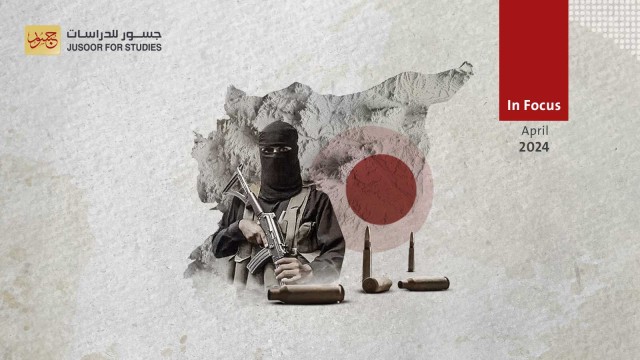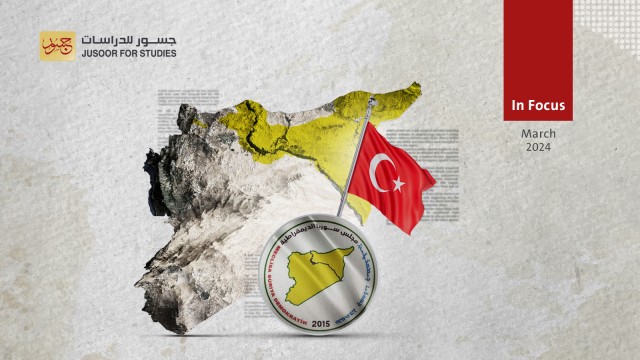Promoting centralization and Future Trends: A reading into the new structure in Tahrir al-Sham
In a media meeting in February 2020, Abu Mohammed al-Golani, the leader of Hayat Tahrir al-Sham, reiterated that one of the most important reasons for the successive losses in the recent military campaigns is the weakness of the factions’ structures and their organizational structures which necessitates them to develop a more consistent organizational structure to avoid possible military complications and prepare for future political transitions.
His comments come after HTS announced that it created three military brigades last April. Other sources also revealed that HTS’s leadership approved the final structural changes with HTS reforming into six combat brigades and administrative and logistical brigades.
HTS’s continuous endeavor to improve its structure must be understood within the following:
• HTS leadership investing in the state of calm and the ceasefire: the leadership is working to organize its members and shift the balance of power within HTS to change the position of groups within the new emerging reality. These efforts prevent the different groups from establishing ideological blocs that diverge from the organization’s general orientations.
• Enhancing centralization and developing structural flexibility: HTS sees the new distribution of members and leaders within a military hierarchy - professional - as important to enhance its military superiority and the speed of its response in addition to strengthening Golani’s grip over the administration of the military structure.
• Enabling HTS to preserve its structure: In the framework of the various proposals to merge the active moderate factions into a single military body, thus transforming HTS into a structure that includes the most important active groups, without undergoing a dismantling and reintegration phase. The restructuring not only increases effectiveness, organization, and flexibility, but also to prevents charismatic personalities from forming their own factions of their fighters.
HTS’s most recent efforts confirm that it will continue rebuilding its ranks in parallel with demonstrating a new pattern of ideological discourse to lift the marker of “terrorism” from it and prompt the international community to accept HTS as a political partner with administrative authority in the northwest of Syria.
It is believed that the challenge to HTS’s strategy lies in it reaching an acceptable form of cooperation between it and the various international bodies and international organizations’ recognition for the administrative order in place in Idlib. In turn, HTS expects international organization to work, formally or informally, in the region in cooperation with bodies affiliated with HTS. HTS expects to be removed from terrorism lists which remains a pending issue given the interrelatedness of the various files between international actors in Syria.








